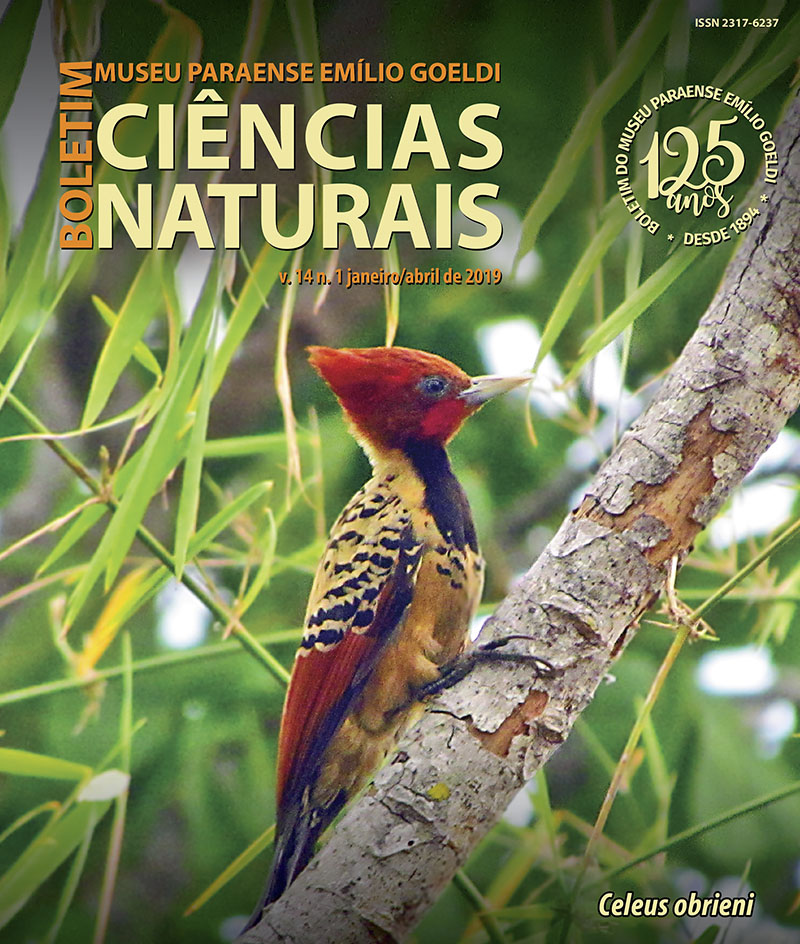The balance point on carbon assimilation in agroforestry systems in the municipalities of Cametá and Tomé-Açu, State of Pará, Brazil
DOI:
https://doi.org/10.46357/bcnaturais.v14i1.139Keywords:
Relações sistêmicas, Modelo presa-predador, BiomassaAbstract
The objective of this study was to evaluate the equilibrium between biotic and abiotic factors in the assimilation of carbon in agroforestry systems (SAF), in the municipalities of Cametá (SAF-CM) and of Tomé-Açu (SAF-TA), State of Pará. Eight plots of 50 m x 50 m were used, where the diameter at breast height (DBH) and height (H) of all individuals (ni) with DBH ≥ 5 cm were measured. To determine the Carbon Stock (CS) contained in the dry biomass, the vegetation of the SAF was divided into: açaí (Euterpe oleracea), cacao (Theobroma cacao) and trees (forest species). In an average of 2,458 ni/ha in SAF-CM and 1,249 ni/ha in SAF-TA, açaí and cacao were the most important species. In both SAF-CM and SAF-TA, the CS was higher in the trees. Prey-predator mathematical modeling in carbon and plant populations in SAF demonstrated a high number of break-even points, which in practice would be the best time to conduct a management plan. The model proved to be apt and adequate in the evaluation of the interaction and equilibrium point between the populations (carbon and plants). The results confirm the SAF as an alternative of sustainable production from the environmental and socioeconomic point of view for the region and the Amazon.
Downloads
Published
Issue
Section
License
Publication means fully assigning and transferring all copyrights of the manuscript to the journal. The Liability Statement and
Assignment of Copyrights will be enclosed with the notice of acceptance. All the authors must sign the document and return it to the journal.








